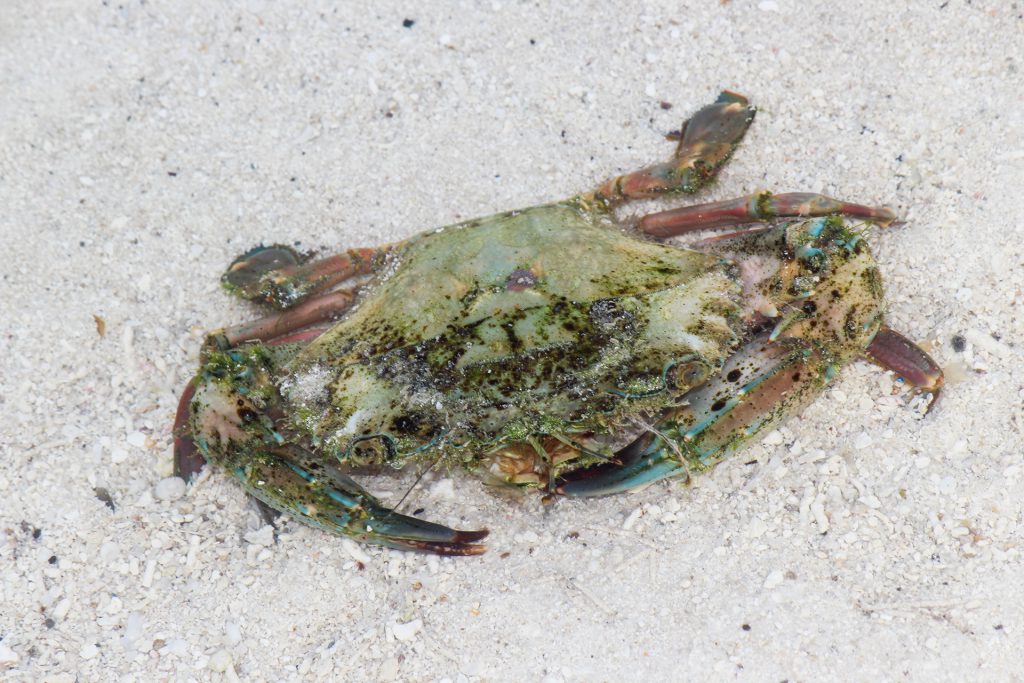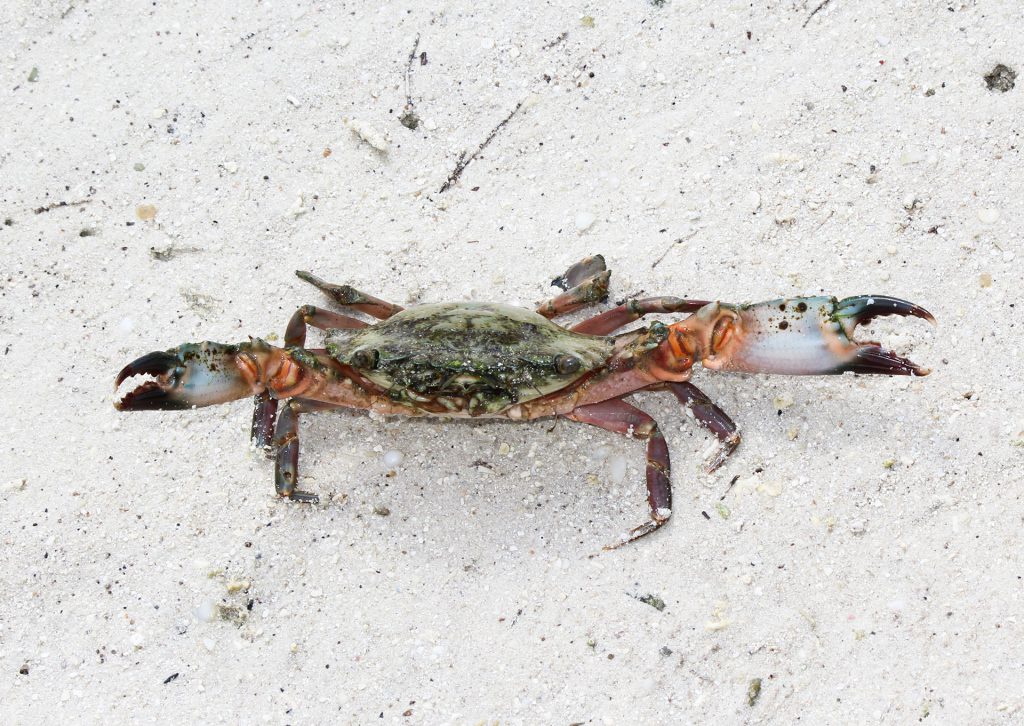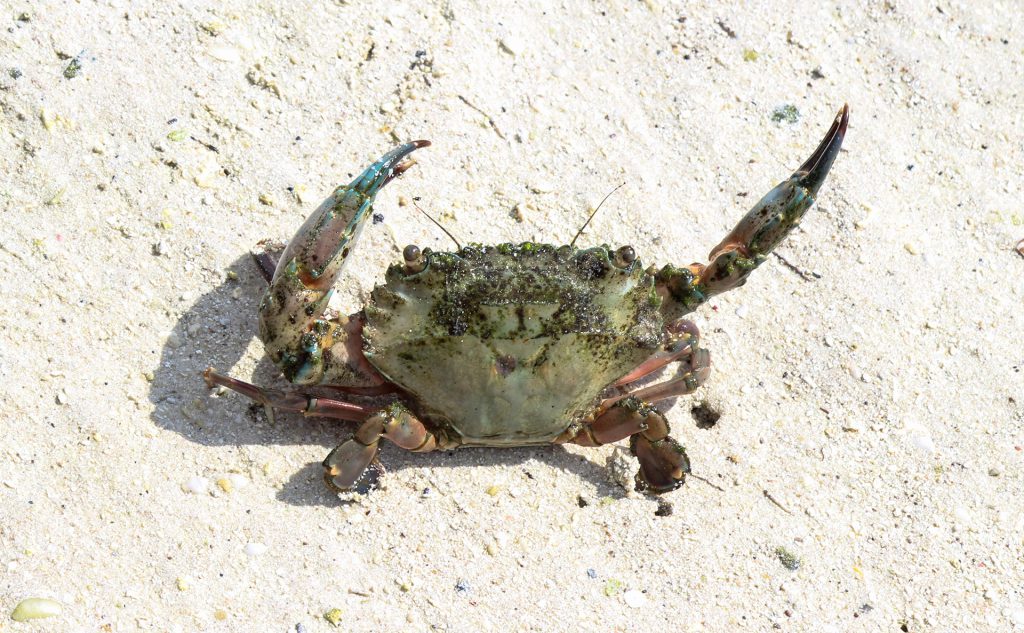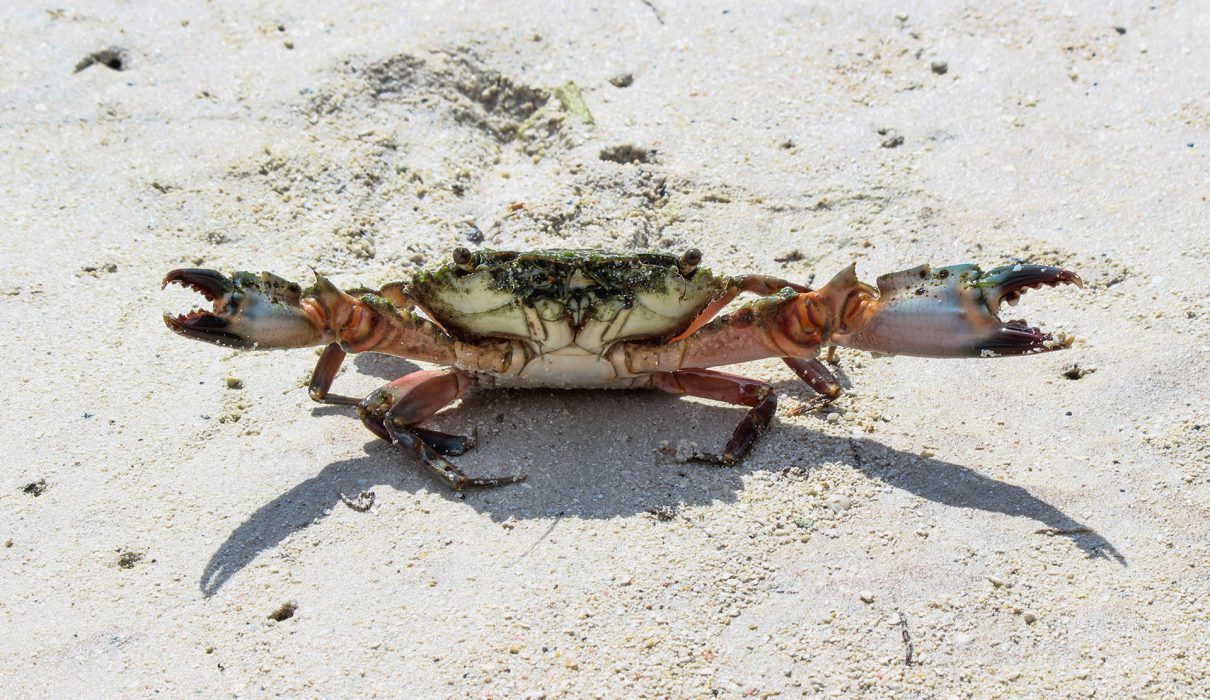The Mud Crab, scientifically known as Scylla serrata, holds a special place in the diverse ecosystem of the Maldives. Often found in mangrove spans and estuaries, these crabs contribute significantly to the coastal habitats of Asia, Australia, and Africa. With their distinctively hard shells and powerful claws, Mud Crabs are known for their prized meat and economic importance.



Understanding Its Classification
Here’s how the Mud Crab fits into the scientific classification:
- Domain: Eukaryota
- Kingdom: Animalia
- Phylum: Arthropoda
- Class: Malacostraca
- Order: Decapoda
- Suborder: Pleocyemata
- Infraorder: Brachyura
- Family: Portunidae
- Genus: Scylla
- Species: S. serrata
Habitat and Distribution
These crabs prefer soft muddy bottoms below the low tide level, often residing in sheltered estuaries, mud flats, and the tidal reaches of rivers. Their range extends from the Indo-Pacific, including areas from South Africa to Southeast Asia, Australia, and even as far as Fiji and Samoa. Mud Crabs have also been introduced to Hawaii and Florida.
Characteristics
Mud Crabs are recognized by their large, hard shells with a brownish-green coloration. They can grow up to 24 centimeters in carapace width and weigh up to 3.5 kilograms. Their shells are adorned with small bumps and ridges, offering protection and camouflage in their habitat.
Diet and Feeding Habits
Omnivorous by nature, Mud Crabs consume a variety of foods including small fish, crustaceans, mollusks, algae, detritus, and plant matter. They are opportunistic feeders, scavenging for available food sources in their environment.
Life Cycle and Commercial Value
Mud Crabs go through several stages of development, from eggs laid by females to larvae that settle on the bottom and develop into juvenile crabs. Once mature, they mate and repeat the cycle. Their meat is highly valued and considered a delicacy in many parts of the world, making them commercially important.
Reference:
- Roy’s Farm. (n.d.). Mud Crab. Retrieved from https://www.roysfarm.com/mud-crab/#google_vignette
- Wikipedia. (n.d.). Scylla serrata. Retrieved from https://en.wikipedia.org/wiki/Scylla_serrata
In conclusion, the Mud Crab is not just a creature of the coast but an integral part of the Maldivian biodiversity, playing roles both ecologically and economically significant.


